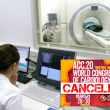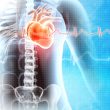In 2020, the European Society of Cardiology guidelines for the management of patients with acute coronary syndromes without ST-segment elevation (Non-ST-Segment Elevation Myocardial Infarction, NSTEMI) were presented. This document went somewhat unnoticed in the context of the COVID-19 pandemic, so this seems a good time to review it and set out some practical “commandments” (something...
Myocardial Injury for COVID-19 Even in Young Patients with Mild Symptoms
Most young COVID-19 patients not requiring hospitalization showed abnormal cardiac magnetic resonance imaging (CMR) beyond two months after diagnosis. Myocardial injury had been found in more serious cases, but not in a healthy population recovered at home. The increasing evidence of the virus’ capacity to directly affect the heart across the whole population and disease...
Infarction, Stroke and Aortic Emergency Syndromes in the Shadow of the Pandemic
The coronavirus pandemic has had a negative impact on the most pressing cardio and neurological emergencies, such as strokes or aortic dissection. These emergencies are normally treated in high complexity centers, which is why it is relatively simple to analyze the number of transfers before and after the pandemic. For some time, care centers have...
Temporary Emergency Guidelines for Infarction During the Pandemic
Several United States societies (the American Heart Association [AHA] among them) have answered the question of many physicians in the front lines: what is the ideal strategy for the treatment of ST segment elevation myocardial infarction (STEMI) during the COVID-19 pandemic? This document intends to ensure that patients with STEMI continue to receive adequate, proven...
Management of Infarction During the COVID-19 Pandemic
Patients with cardiovascular disease infected with COVID-19 are at a particular risk for morbidity and mortality. In any case, it should be noted that most patients requiring cardiovascular care due to ischemic heart disease, peripheral vascular disease, or structural heart disease are not infected. Being prepared to face this pandemic is as important as guaranteeing...
Virtual ACC 2020 | Colchicine After Infarction: Good Results and Cost-Effectiveness
Low doses of colchicine reduce the risk of ischemic events after an acute myocardial infarction, according to the COLCOT trial, originally presented at the American Heart Association (AHA) 2019 Scientific Session and simultaneously published in the New England Journal of Medicine (NEJM). The new information featured at the virtual ACC 2020 refers to its cost-effectiveness. Colchicine...
Virtual ACC 2020 | “Dangerous” Plaques by CT Effectively Predict Infarction
This post-hoc analysis of the SCOT-HEART shows low-attenuation plaque burden might successfully predict events. A greater number of low-attenuation plaques seems to be synonymous with greater risk which makes them better predictors than clinical scores, coronary calcification and stenosis degree. IVUS, CT and carotid ultrasound are the accepted tools to diagnose plaque burden and predict...
Virtual ACC 2020 | Myocardial Ischemia Induced by Sudden Mental Stress
Myocardial ischemia induced by sudden mental stress is associated with bad prognosis, especially in patients with a history of acute myocardial infarction according to this new study. This study, called MIMS-2, was meant to be presented at ACC 2020 together with the World Congress of Cardiology in Chicago, which was shut down because of the...
Mechanisms of Infarction in Coronary Arteries with Non-Significant Lesions
Infarctions with non-obstructive coronary artery disease, also known as MINOCA (myocardial infarction with nonobstructive coronary arteries), often present plaque rupture and thrombi associated with the affected myocardial territory. In these patients, optical coherence tomography (OCT) is of great value to identify the “culprit”. Even though atherosclerosis has been identified as a potential MINOCA mechanism, the...
Current Mechanical Complications of Infarction
Contemporary data of a recently published large registry show that mechanical complications after infarction are not frequent but maintain a very high mortality rate that does not seem to improve over time. Our information on mechanical complications was outdated and we did not have current data on their incidence and prognosis. Such is precisely the...







